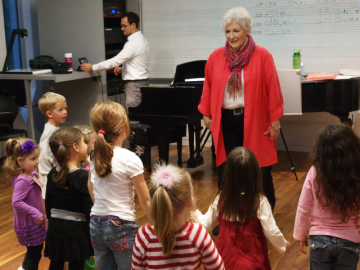Campus News
The Teaching Garden
August 21, 2020
Yvonne Gay
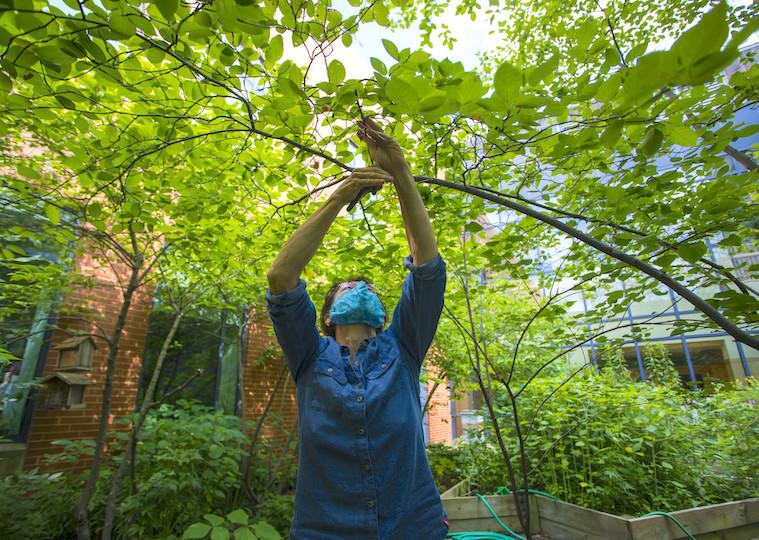
Professor of Biology Mary Garvin works in the Science Center’s pollinator garden.
Photo credit: Yvonne Gay
This academic year, many students will learn in outdoor classrooms and some will have the opportunity to explore Oberlin’s pollinator garden—a living classroom inside the Science Center.
Professor of Biology Mary Garvin tugs at a thin tree branch above her head and brings it closer to her reach, gently nipping at it with a small pair of shears. She prefers that the pollinator garden grows uninhibited, so pruning is typically done only when necessary.
The garden, located on the first floor of the Science Center, is framed by a large bank of two-story windows. It’s designed to allow visitors to literally see conservation at work and gain an appreciation for the critical ecosystem services that flowering plants and their pollinators provide. The depth of the space can be difficult to gauge until the door opens and you are welcomed inside. Visitors are met with a narrow path that winds past several flower beds before opening up to bird houses and ferns. The garden is filled with some 50 species of plants and native hosts such as common milkweed, butterfly weed, and swamp weed. There are also nesting sites for native species of solitary bees and hives for European honey bees. Small water reservoirs are tucked under branches. The serenity and majesty of the space is not lost on Garvin.
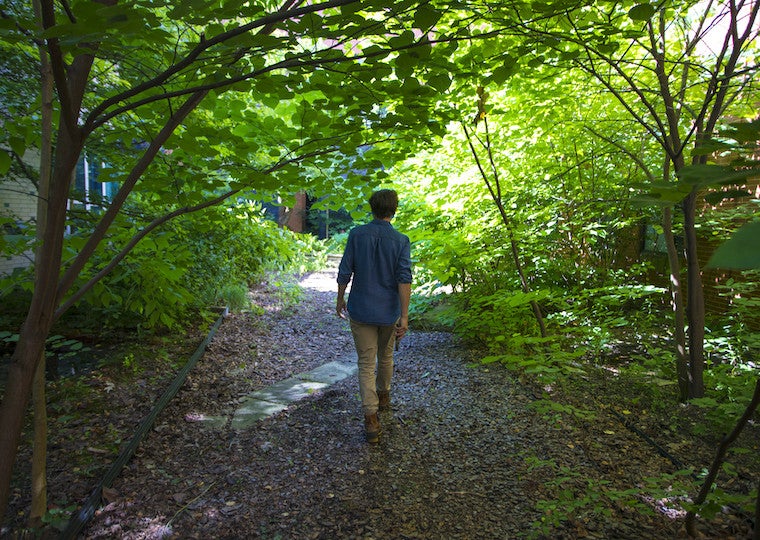
“I was initially drawn to biology as a child,” Garvin says.’’ I had a rather obsessive attraction to the beauty of nature. I was very lucky to grow up in a rural area when kids were allowed to roam the woods and fields and creeks unsupervised. Growing up in a large family, I guess that I found great peace in that natural world. I just love to watch a garden progress through a season—watch inter-species interactions, especially plant and insect interactions and the seasonal changes in these interactions. So, I guess that I also really enjoy seeing students develop the same sense of joy and wonder and the resulting inspiration that they derive from it.”
To prepare her students for their learning journey, Garvin spent several weeks watering, pruning, and inspecting foliage inside the open air atrium during the summer months. Prior to the coronavirus, the pollinator garden was often used by several biology and geology professors. Garvin would also bring her class of 20 or more students into the space to work with the hive, while others performed semester-long projects. Although Garvin plans to primarily teach remotely this year—students will spend the first half of the semester collecting data for semester-long projects—the openness of the garden lends itself to social distancing practices so she intends to lead in person small group labs there and in other field settings on college property. Students will also create and curate an insect collection.
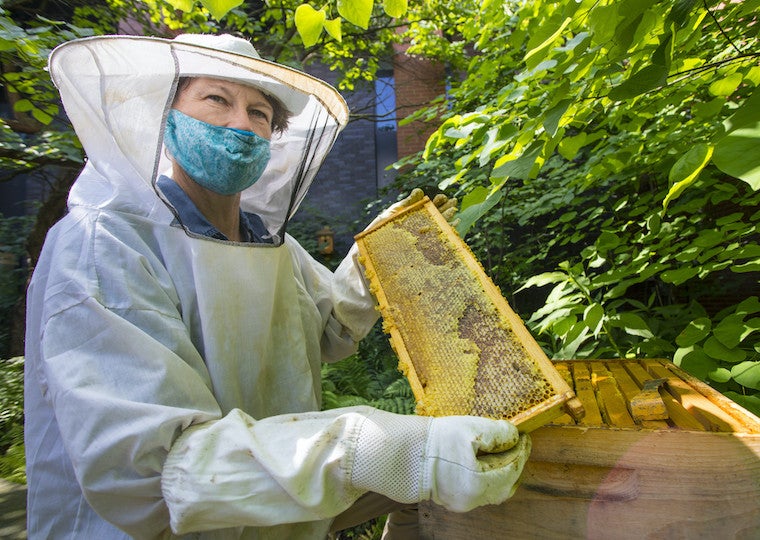
During the winter months, when most of the plants and the bees are dormant, the pollinator garden is still very interesting, explains Garvin. “Birds come in to feed on the seeds and fruit that result from successful flower pollination. The birds also feed on bees that died and have been removed from the hive by young worker bees. On a warm day in January or February, the ground outside of the hive might be littered with dead bees from such a cleaning. In class this year, the winter garden provides an opportunity to see these processes at work and to see the effects of climate change, such as the early emergence of plants in response to our warming winters.”
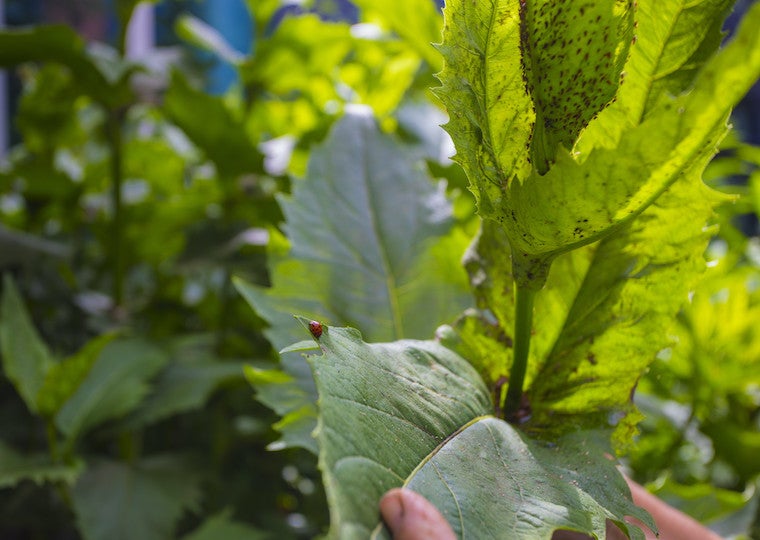
For Garvin, the best teaching is actually coaching or mentoring students in how to approach problems, think critically, and learn in ways that are best for them. She does this by guiding her students through their own exploration of the scientific process—first by providing them with the opportunity to experience a sense of wonder, then by walking with them on that journey through the scientific process. The pollinator garden is a wonderful tool for this approach.
“Here’s an observation that a student might make,” Garvin says, walking briskly over to a large leaf plant with red specks. “All of these plants have these very interesting insects, but they're not on other plants. So, it would be the student’s job to figure out what these insects are and identify the plant. But why are the insects only on this plant and not other plants? The student can develop a hypothesis and together we can do the creative piece of designing and experimenting to see if we can figure that out.”
Garvin will teach Ecology of a Watershed; Genetics, Evolution, and Ecology; and Invertebrate Ecology and Evolution this academic year.
You may also like…
Remembering Former Visiting Assistant Professor Leila Ben-Nasr
Leila Ben-Nasr, a former visiting assistant professor of comparative American studies, died on November 28, 2025.
Oberlin Community Remembers a Beloved Retired Professor
A member of Oberlin faculty for 13 years, Peggy Bennett was known by students and the Oberlin community for creating and leading MusicPlay, a preschool classroom and learning lab run as part of the...
Eric Rooks Named Director of Campus Safety at Oberlin
Longtime public servant emphasizes collaborative partnerships and kindness.

